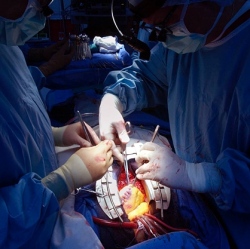
We’ve seen 3D-printed cells, organs, and even body parts over the last few years. But in Philadelphia, a team of scientists is printing cancerous tumours, modelling the very things that are threatening to kill patients in order to understand how to quell them.
It’s becoming more and more common to use 3D printers to print "sheets" of cells in the lab, including cancerous ones. These 2D panels can be used to test new therapies, but they aren’t perfect: A tumour is a whole other animal, with its own architecture and peculiarities, which can make it tough to predict how the real thing will react to treatment.
So, why not print the tumours themselves? That’s exactly what the Drexel team describes in a paper in Biofabrication. Using a syringe mounted to a specialized 3D cell printer, they printed a mixture of HeLa cells and hydrogel to recreate a cervical cancer tumour.
(If you recognize that word, it’s because HeLa cells are named for their progenitor, Henrietta Lacks, whose cancerous cells were taken in the 1950s to create some of the first "immortal" line of research cells).
